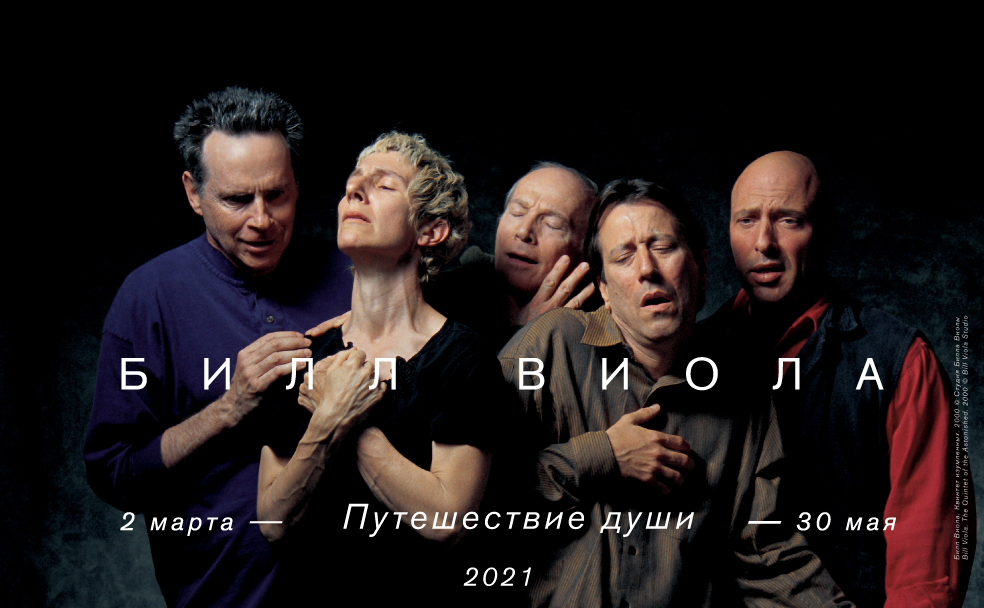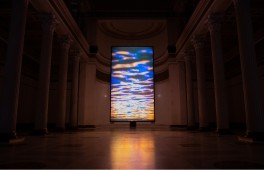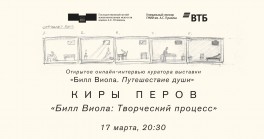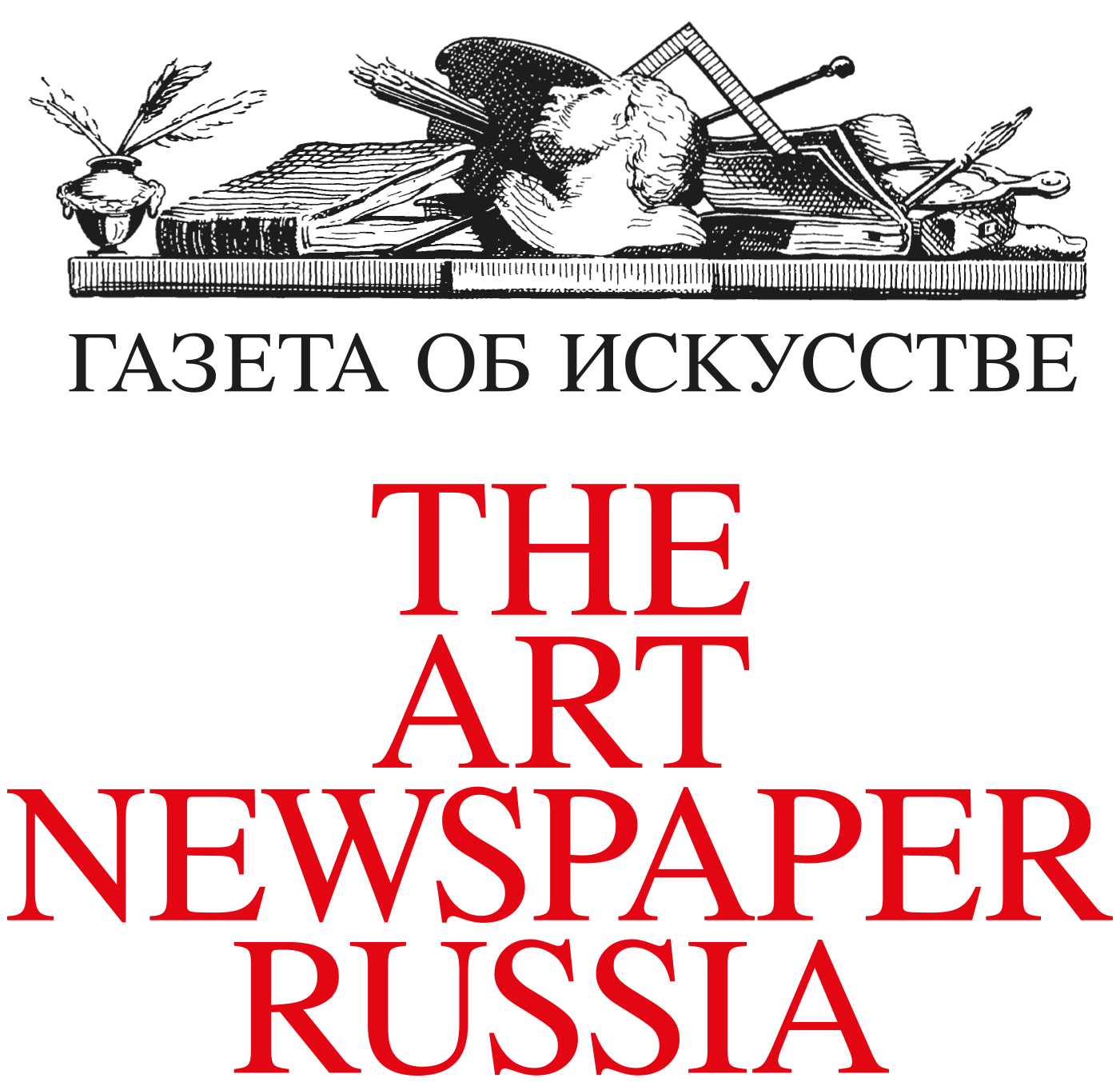The Pushkin State Museum of Fine Arts and VTB Bank present the first solo exhibition of Bill Viola in Russia. Bill Viola is one of the most influential artists working in the field of video and a recognized master of this genre. For the first time in its history, the Pushkin Museum hosts such a large-scale show of media art. More than 20 artworks presented at the exhibition were created in the period from 2000 to 2014. They demonstrate artist’s mastering of moving image technology in creating these signature works. In the Museum’s main exhibition halls visitors will see for the first time such large-scale works as Fire Woman (2005), Catherine’s Room (2001), The Quintet of the Astonished (2000) and four works of the Martyrs series (2014). Tickets will go on sale on February 23rd.
Bill Viola is a recognized master who has been a pioneer of video art since the 1970s. One of the most influential American artists living today, for more than four decades he has been creating single-channel videotapes, video and sound installations, acoustical environments, as well as media works that accompany large-scale concerts and opera productions. Viola represented the USA at the Venice Biennale in 1995; selected solo exhibitions were held at the Whitney Museum of American Art (1997), the J. Paul Getty Museum, Los Angeles (2003), the Mori Art Museum, Tokyo (2006), the Grand Palais, Paris (2014), the Palazzo Strozzi in Florence (2017), the Guggenheim Museum in Bilbao (2017), the Royal Academy of Arts in London (2019), the Busan Museum of Art, South Korea (2020); and in St. Paul's Cathedral in London Martyrs (Earth, Air, Fire, Water) (2014), and the video-triptych Mary (2016) were installed as permanent installations.
This first solo exhibition in Russia covers fourteen years of Bill Viola’s practice. However, this is not a separate, isolated stage of his artistic career. Instead, it is a continuation of themes that always preoccupied the artist in his life and work. These artworks summarize a creative search that focuses on the human condition, the journey of man in this world from birth to death, and the transformations of the soul. Viola’s work has been influenced by his personal study of the world’s spiritual heritage, including Christian mysticism, Islamic Sufism, and Zen Buddhism, and by his frequent travels throughout the world. On his voyages, he recorded visual images and traditional music as well as observing how religion influences art and culture. From the standpoint of the medium, Viola’s experiments may be called an ongoing study of the possibilities of video technology. To make his artworks, he employs an extensive range of equipment. Viola’s practice has developed in tandem with technological progress.
The exhibition is presented within the "Pushkin Museum XXI" project, which focuses on bringing together classical tradition and contemporary practice and offers the audience a new experience of art perception—through emotion and engagement. Bill Viola’s work is a fine example of rethinking traditional Western iconography, religious imagery and metaphors through its refraction in our contemporary environment by means of media art. Though the current exhibition does not provide direct juxtapositions with Viola’s sources of inspiration, curators invite viewers to identify iconographic references and migrating images by visiting the old master rooms of The Pushkin Museum after viewing this exhibition.
Walking on the Edge and The Encounter (both 2012), from the Mirage series, present a contemplative journey through an inner landscape. The two female figures in one work and the two male figures in the other move towards each other and then separate in the vastness of the Mojave Desert in California. These visual narratives combine Eastern spirituality and European traditions to tell the stories of how female wisdom is transferred from one generation to the next, and how a young man travels with an older man to find his own path. At the same time, these artworks convey the grandeur of an eternal natural landscape where a human being unites with the universe. The desert appeared for the first time in Viola’s work in Chott el-Djerid (A Portrait in Light and Heat) (1979), in which the artist sought not only to transgress the boundaries of reality, but also to turn the very act of seeing into an intellectual experience.
In the Passions series (2000-2002), the artist shows how the inner workings of a human soul find external expression. The iconography of these works refers to the classical tradition of late Renaissance and Baroque art with its interest in the visual expression of human emotions through dramatic light effects. Here, Viola works with the sublime, which, by the definition of the French philosopher Jean-Luc Nancy, is “the emotion of the subject at the limit” rather than “a feeling in a banal sense”. Technology transforms the images of ordinary people into sacred icons: the slow-motion playback of human emotions makes these images resemble Baroque paintings, while the arrangement of video sequences displayed on flat screens is reminiscent of traditional altar compositions. Just as religious paintings, Viola’s works are perceived by the senses rather than the intellect. Surrender (2001) from this series portrays a man and a woman who literally bow to their fates, lower and lower, until their faces touch the water’s surface. Their images undergo constant distortion and deformation until we realize at some point that we are seeing not faces but their reflections that increasingly dissolve as the water continues to be disturbed. Two other works in the Passions series, The Quintet of the Astonished (2000) and Observance (2002), expand human emotions through their detailed slow-motion depiction. By decreasing the speed of the performers’ actions, Viola reveals a rich palette of micro stages in between several distinct and recognizable emotional states, including sadness, anger, and joy. Catherine’s Room (2001) alludes to traditional religious series depicting saints’ lives. The inspiration for this work was a predella sequence by Andrea di Bartolo from the late fourteenth century. Viola references this medieval art form within a contemporary media format. To the modern eye, they look like storyboards. In their large-scale versions, the narrative fresco cycles, have an even greater resemblance to the contemporary visual art form that has most directly descended from them — cinema. The main artistic tools in the Passions series are light, movement, and composition, whose understanding Viola shares with the old masters.
The laconic artistic language of Bill Viola's media work conveys all the drama of the experience through an appeal to the natural elements. This approach aligns the artist with the masters of the early Renaissance through to Baroque art. The Martyrs series (2014), works derived from the installation commissioned for St. Paul’s Cathedral in London, depict four individuals enduring the overwhelming forces of the elements of nature. The artist transforms the idea of the sublime and makes it clear and emotionally accessible to a contemporary audience. Viola structures his artistic statement around the original meaning of the Greek word for “martyr,” which translates as “witness.” According to him, mass media turn all of us into passive witnesses to the suffering of others.
The Water Portraits series of 2013 refers to the motif of water as a boundary between our world and the netherworlds. The three protagonists of these works — Gleb, Madison, and Sharon — are lying underwater on the bottom of a streambed with their eyes closed and without breathing. Despite the general stillness, the artworks evoke conflicting feelings, as it is not clear whether these people will be reborn after their immersion or not, whether it is a dream or reality, and what the human limits are.
The works in the Transfigurations series (2007–2008) — The Innocents, The Return, and Three Women — were recorded with a special camera system created with the help of technicians from Lucasfilm studios in California. The figures emerge from the shadows and, passing through a wall of water that acts as a border between existence and nonexistence, move into the light that imbues their gray, grainy silhouettes with color and definition, returning once again into the darkness. To attain this effect, the action was shot with two cameras (an old black-and-white CCTV camera and a state-of-the-art high-definition color camera), and the transition between the two was merged in the editing room.
Water and fire are the key elements of the Tristan series (2005), exhibited in The Pushkin Museum’s large White Room, whose three-nave structure resembles a church. The works of this series are the high point of the whole exhibition, describing the most powerful of human emotions — a love so passionate that it ultimately leads the lovers to their death. The natural element of water acts as a potent symbol to convey this “affectivity,” being part of the purification ritual that prepares the man and the woman for their transformation; it also serves as a metaphor for suffocating passion in Becoming Light, and as a medium for rebirth in Tristan’s Ascension (The Sound of a Mountain Under a Waterfall) and Isolde’s Ascension (The Shape of Light in the Space After Death), (all 2005). Fire Woman (2005) adds another element by representing the destructive power of fire. Originally conceived for Peter Sellars’ production of Wagner’s Tristan und Isolde, these six pieces, part of the four-hour video, were then re-edited as separate artworks.
Marina Loshak, Director of The Pushkin State Museum of Fine Arts: “Working with contemporary artists, we strive to find those who are able to help lift the veil of time, enter into a dialogue with eternity, with the past - through the present. Viola addresses the fundamental matters of life—birth, death, and transformation—and creates sacred spaces that are inspired by the imagery of the past. Viola's works have been repeatedly shown in Russia, including in the Pushkin Museum, but for the first time the main Museum halls contain a personal display of this modern classic. The fluid digital environment of Viola's works conveys an impulse of sacredness of contemporary images, embeds them in the flow of history and reflects Viola's own spiritual journey. We are happy that the Russian viewer now has the opportunity to join the artist on this journey”.
Kira Perov, Executive Director, Bill Viola Studio, curator of the exhibition: “It is the year 2020 and the coronavirus pandemic has changed the world, and the way we see it, in indelible ways. We are feeling a deep sense of isolation since we are discouraged from meeting and touching, yet we are all together undergoing the same experience. Inside the turmoil there is also a new spaciousness, an opening up of new possibilities. We have turned to digital media, to the internet, for communication with each other, and increased personal and global dialogue. At the same time, humanity has been forced to slow down, to look at everything differently, and hopefully to listen. It is most appropriate, then, during this time to present an exhibition at the Pushkin Museum of the work of Bill Viola whose slow motion videos and installations enable the viewer to look more intently, to feel deeper, to experience emotions longer. And most importantly, these works describe Bill Viola’s profound vision of the eternal nature of human life, leaving us with hope for the future”.
Curators: Kira Perov, Executive Director, Bill Viola Studio; Olga Shishko, Head of Cinema and Media Art Department, The Pushkin State Museum of Fine Arts














